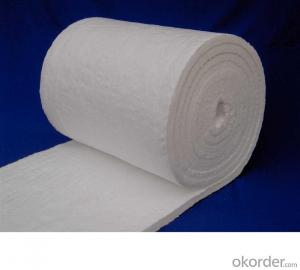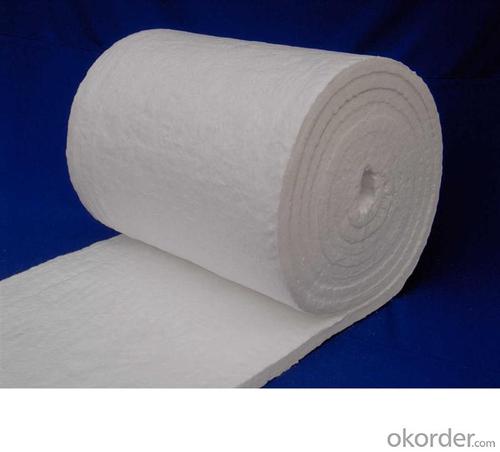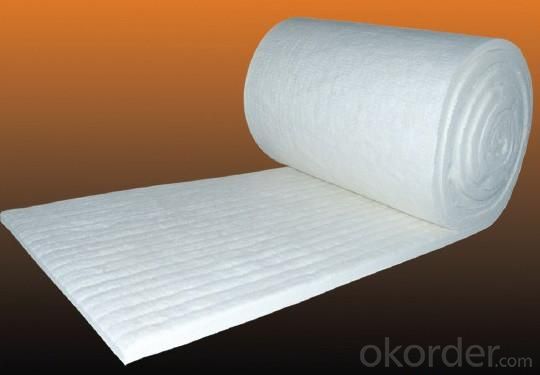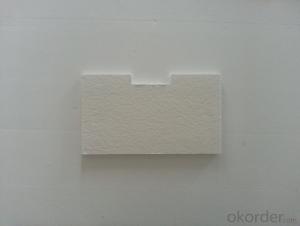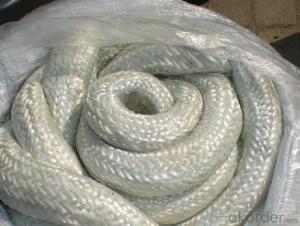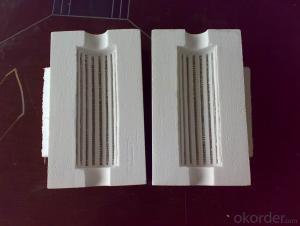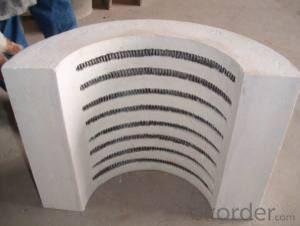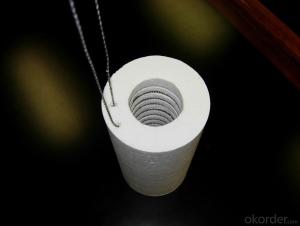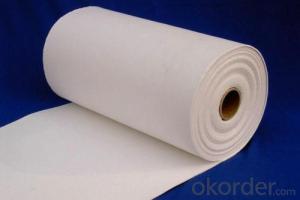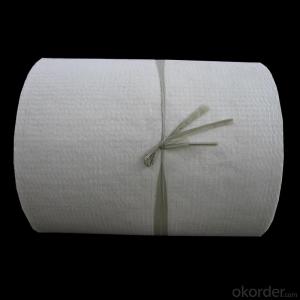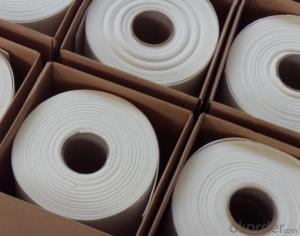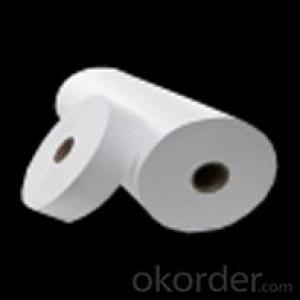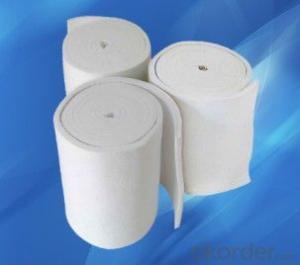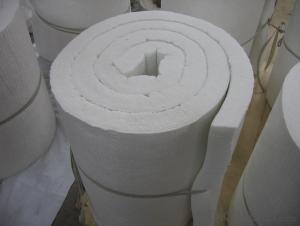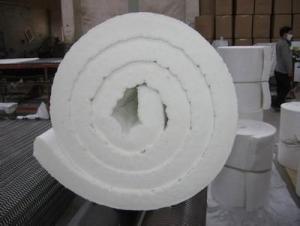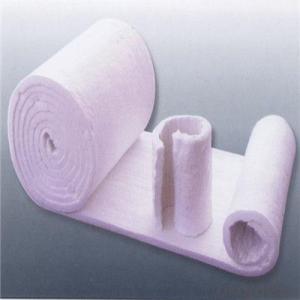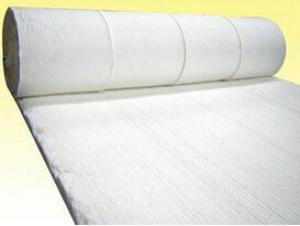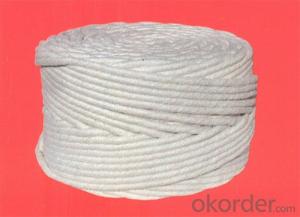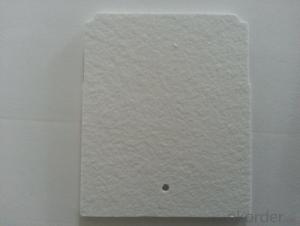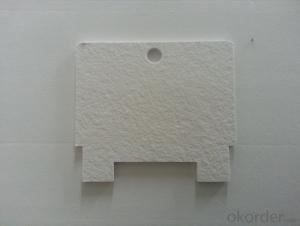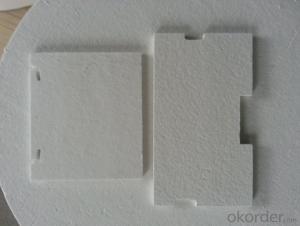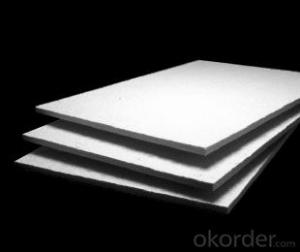1425CMAX Insulation Ceramic Fiber Blanket
- Loading Port:
- Qingdao
- Payment Terms:
- TT OR LC
- Min Order Qty:
- 10 m.t.
- Supply Capability:
- 100 m.t./month
OKorder Service Pledge
OKorder Financial Service
You Might Also Like
Quick Details
| Grade: | HZ (High Zirconium) | Application: | Liners Of Industrial Furnace | Thickness: | 25/50 mm |
| Width: | 610/600 mm | Length: | 7200/3600 mm | Chemical Composition: | 35% Al2O3+46.7% SiO2+16% ZrO2 |
| Working Temperature: | 1300 | Fiber Diameter: | 2.6 | Thermal Conductivity: | 0.23 |
| Density (kg/m³ ): | 128 | Model Number: | 1425 | Brand Name: | |
| Place of Origin: | (Mainland) | Color: | white |
Packaging & Delivery
| Packaging Detail: | carton/woven bag |
| Delivery Detail: | 15 days after receipt of pre-payment |
Specifications
NATI Ceramic Fiber Blanket is made from long special ceramic fiber, formed by special strong double surface needling
Introduction
NATI Ceramic Fiber Blanket is made from long special ceramic fiber, formed by special strong double surface needling, without any binder ,increasing inter-weaving and tensile strength, so that NATI ceramic fiber blanket own good stability under any working temperature.
Characteristics
*Good springiness for fiber
*Excellent strength and resistance to blowing
*Excellent chemical stability, resistance to erosion
*Low thermal conductivity
*Low thermal shrinkage
*Excellent sound absorption
Typical Applications
*Filling insulation and joint sealing
*Back-up lining for industrial furnaces
*Fireproof materials for construction
*High temperature materials for filtration *
Raw materials for further producing, such as modules
Physical & Chemical Data
Description | 1000 NATI Ceramic Fiber Blanket | 1260 NATI Ceramic Fiber Blanket | 1425 NATI Ceramic Fiber Blanket | 1500 NATI Ceramic Fiber Blanket | 1600 NATI Ceramic Fiber Blanket |
Classification temperature( ℃) | 1000 | 1260 | 1425 | 1500 | 1600 |
Melting point( ℃) | 1760 | 1760 | 1800 | 1900 | 2000 |
Color | White | White | White | Green-blue | White |
Average fiber diameter (um) | 2.6 | 2.6 | 2.8 | 2.65 | 3.1 |
Fiber length (mm) | ~250 | ~250 | ~250 | ~150 | ~400 |
Density for fiber (Kg/ m3) | 2600 | 2600 | 2800 | 2650 | 3100 |
Shot content ( > 212um) (%) | 12 | 12 | 12 | ||
Thermal conductivity rate Kcal/mh℃ (W/mK) ,ASTM C201 | |||||
Average 400℃ | 0.08 | 0.08 | 0.08 | ||
Average 600℃ | 0.19 | 0.12 | 0.12 | ||
Average 800℃ | 0.19 | 0.16 | 0.16 | ||
Average 1000℃ | 0.23 | ||||
Chemical composition : | |||||
Al2O3 | 43 | 45 | 35 | 40 | 72 |
SiO2 | 55 | 52 | 46.7 | 58.1 | 28 |
ZrO2 | 15-17 | ||||
Cr2O3 | 1.8 | ||||
Standard Dimension
Density: 96,128,160Kg/m3
Dimension:14400×610×13 mm 7200×610×25 mm 3600×610×50 mm
- Q: Who can help me introduce the principle of vacuum forming of ceramic fiber board? Thank you very much.
- Features: excellent chemical stability, excellent thermal stability, excellent tensile strength, low thermal conductivity, low thermal capacity, excellent sound absorption and noise reduction performance. Typical applications: aerospace, steel, petrochemical high temperature insulation; military road insulation; electrical components insulation; fire protection; high temperature gasket; modules, folding blocks of raw materials. Three. Ceramic fiber felt products: ceramic fiber vacuum forming felt is made of ceramic fiber cotton produced by resistance furnace injection molding. It is processed by vacuum forming process. It is a lightweight, flexible refractory fiber insulation material, made of a combination of high purity refractory oxides and organic binders. In addition to the excellent properties of bulk ceramic fiber cotton, the ceramic fiber vacuum forming felt has good strength and elasticity, and is a versatile product. Product characteristics: high strength, long service life; low heat capacity, low heat conductivity; non brittle material, toughness; size precision, good flatness; cutting easy installation, convenient construction; excellent anti erosion properties; continuous production, fiber distribution, stable performance; excellent acoustic noise performance.
- Q: What is the process of producing ceramic fiber mats?
- Mifso-12 ceramic fiber pad is Xin Xing sealing material factory is composed of ceramic fiber products through precise cutting, punching, die stamping process (part of the product after ultra high pressure adhesive bonding) produced.Can be customized by users to produce sizes.
- Q: What is the customs code for ceramic fiber products?
- The customs code should be 6914.9000Specific can be seen by the Chinese customs published in 2005 edition of import and export commodity names and codes, thirteenth and sixty-ninth chapters, ceramic products, P166-168 pages.
- Q: What is ceramic fiber paper?
- The specification is various, the thickness of 0.5-10mm. products using four consecutive rinsing and slag removal process, the fiber distribution, high tensile strength good flexibility, no delamination, no slag, can be cut with a little organic matter.
- Q: What is the difference between the national standards for ceramic fiber products and ordinary aluminium silicate?
- Ceramic fiber products (aluminum silicate fiber products) in recent years, ceramic fiber products (aluminum silicate fiber products) in the application of high temperature sintering furnace expanding, ceramic fiber products (aluminum silicate fiber products) refractory felt and blanket products, the highest use temperature up to 1649 DEG C. Ceramic fiber products (aluminum silicate fiber products) to heat insulation effect is good, easy to use, especially small heat storage characteristics, widely used in various kilns, greatly demonstrated high energy efficiency. Ceramic fiber products (aluminum silicate fiber products) (1) ceramic fiber products (aluminum silicate fiber products) varieties and properties of ceramic fiber products (aluminum silicate fiber products) is the most important indicator of fiber diameter and thermal stability. Al2O3SiO2 fiber is commonly used in ceramic industry. It is divided into different application range according to the content of Al2O3, and Cr2O3 material is introduced into it to improve its refractory and oxidation resistance.
- Q: Refractory ceramics and other refractory materials manufacturing is a big industry?
- Inorganic refractory: CeramicHeavy industries (of fire furnaces)There are also organic polymers: halogen and halogen free construction"Ceramic fiber materials are generally used in heat insulation places, and can be used in all high temperature industries.
- Q: The product characteristics of ceramic fiber cloth?
- It has good low temperature and high temperature strength;Non-toxic, harmless, no adverse effects on the environment;Convenient construction and installation;
- Q: Can a series of ceramic fiber products be used in combination?
- Industrial furnace insulation backing: suitable for all types of industrial furnace (annular furnace, trolley furnace, pit furnace, furnace donburi etc.)Materials: ceramic fiber blanket, ceramic fiber module, ceramic fiber module.
- Q: ceramic fiber
- Advantages of ceramic fiberRefractory ceramic fiber material is a lightweight and efficient thermal insulation material. It has the following advantages over traditional heat insulation materials:Ceramic fiber as lining, low volume density: ceramic fiber lining than light heat insulation brick lining light more than 75%, lighter than light castable lining light 90% to 95%. If using fiber lining, it can greatly reduce the steel structure load and prolong the service life of the furnace.The heat capacity (heat storage capacity) of ceramic fiber lining is low: the heat capacity of ceramic fiber is only about l/10 of light heat resistant lining and light castable lining, and the heat capacity of lining material is proportional to the weight of lining. Low heat capacity means the furnace in the reciprocating operation absorb less heat and heating speed, greatly reducing the operational control of the temperature in energy consumption, especially for heating furnace and furnace, furnace shutdown has obvious energy saving effect.Ceramic fiber lining: low thermal conductivity of ceramic fiber lining in the average temperature of 400 degrees, the thermal conductivity is less than 0.1w/mk, the average 600 degrees less than 0.l5 w/mk, average 1000 degrees less than 0.25w/mk, about l/8 as a lightweight clay brick, lightweight refractory lining l/10, adiabatic effect.The construction of ceramic fiber lining is simple: no expansion joints are needed during construction, and the construction personnel can be started after the basic training. The technical factors of construction have little influence on the insulation effect of the lining. Ji'nan Sheng Yang
- Q: At present, the field of ceramic fiber, what is the latest development of technology or products?
- New product -- soluble ceramic fiber blanket. Ten years ago have been produced, but not up, from the beginning of 2015, Japan, Europe and other countries on the ceramic fiber products safety index is getting higher, the soluble ceramic fiber is also hot again, also with the help of a power plant thermal ceramic dragon pipe insulation insulation with 600 DEG 30mm thick aluminum silicate fiber blanket. The trial production of a batch of 20 tons of soluble ceramic fiber blanket.
Send your message to us
1425CMAX Insulation Ceramic Fiber Blanket
- Loading Port:
- Qingdao
- Payment Terms:
- TT OR LC
- Min Order Qty:
- 10 m.t.
- Supply Capability:
- 100 m.t./month
OKorder Service Pledge
OKorder Financial Service
Similar products
Hot products
Hot Searches
Related keywords
